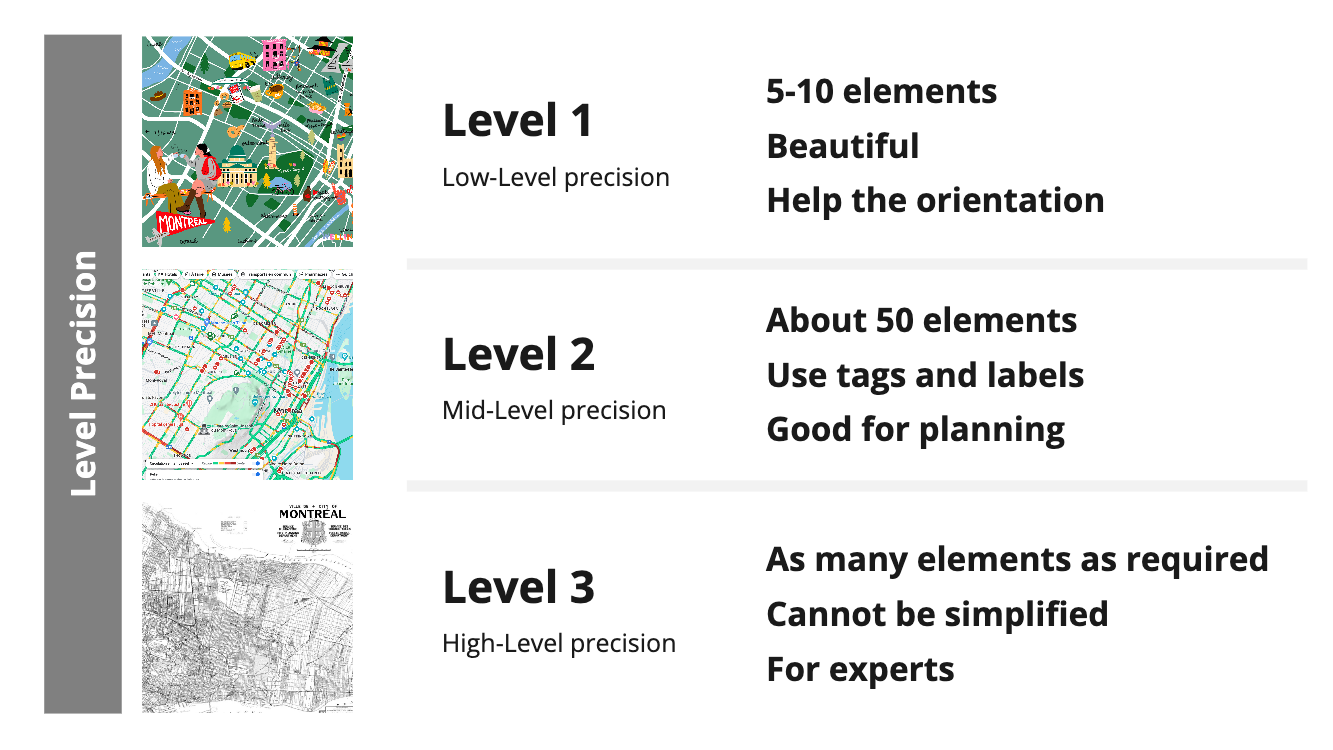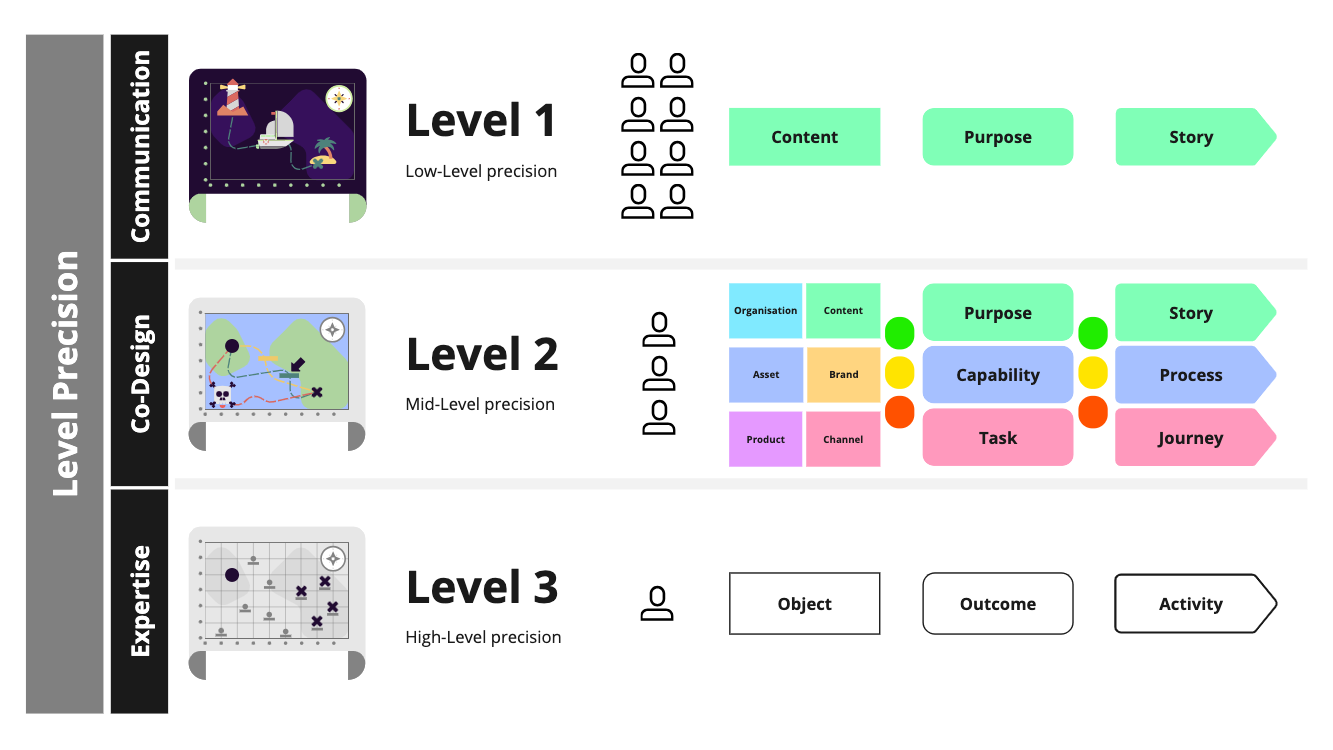The first: a beautiful illustrated map of the city of Montreal, highlighting a dozen places to visit.
The second: Google Maps, with information on blocked roads and heavy traffic on certain streets.
The third: a map detailing the sewers, pipelines, and underground water currents.

When mapping and co-designing a company, it’s essential to understand which type of map is needed. Not for us, as experts, but for the people we want to communicate with, in their own context. Thus, the three levels of abstraction I use serve very distinct purposes.

You are an expert in your field. You understand all the mechanisms of a machine, you master your software, you adhere to industry best practices, and complexity doesn’t intimidate you because you deal with it every day. Level three is designed for you. Just for you.
The idea behind this level is to acknowledge that not everything can be simplified. If we have trains, computers, and mobile phones, it’s because some specialists didn’t take shortcuts.
The expert’s mission here is to report only what is essential to Level 2.
All the experts have identified what is important and have synthesized the problems or opportunities. Now it’s time to sit down, share these insights, and co-create the strategy. At this level, all the basic elements of EDGY are put into context through facets and intersections.
With a manageable amount of information, it becomes possible to create a plan. Just like on Google Maps, experts need to indicate where things are working well and where the obstacles are. In EDGY, we use tags and color codes to clarify these points. There are always several paths to reach the goal... The idea is to move forward together, so we don’t get lost along the way.
This level is designed for people who are not experts but need to understand the essentials to see the forest (not just the trees) and take action. Whether they are employees, partners, or clients, the goal is to simplify complex information so that it is easily understandable and actionable.
The idea here is to provide a clear overview without delving into technical details. This level could resemble a tourist map of the city of Montreal, highlighting only the key points needed to navigate. It’s not about oversimplifying but about communicating concisely and relevantly, so everyone can contribute to the common goal.
The aim of Level 1 is to make the company’s strategy, objectives, or actions accessible to everyone, so that each member can find their place in the overall picture without being overwhelmed by complex details.

When we bring everything together with EDGY, we primarily focus on pushing the strategy to Level 2. To create an effective strategy, we aim for a small group of people and use a limited amount of information from Level 3, analyzed through the different lenses of facets and intersections. We use red, orange, and green tags to identify what’s bad, neutral, and good. Once we’ve decided on our course of action, we communicate the strategy at Level 1 to reach everyone without overwhelming them.
In the next article, we will talk about “moments in time.” Mapping is helpful, but it is also crucial to know where we are and where we are going.
If you want to learn more, check out Jean-Sébastien's talk at the Intersection 24 conference and his LinkedIn page.
Did you like this blog post? Never miss an update when we publish next:
ENTERPRISE DESIGN PATTERNS
Capturing a wealth of experience from many sources, four world-class enterprise designers and architects present a collection of 35 immediately applicable solutions to successful enterprise design.
Buy the book